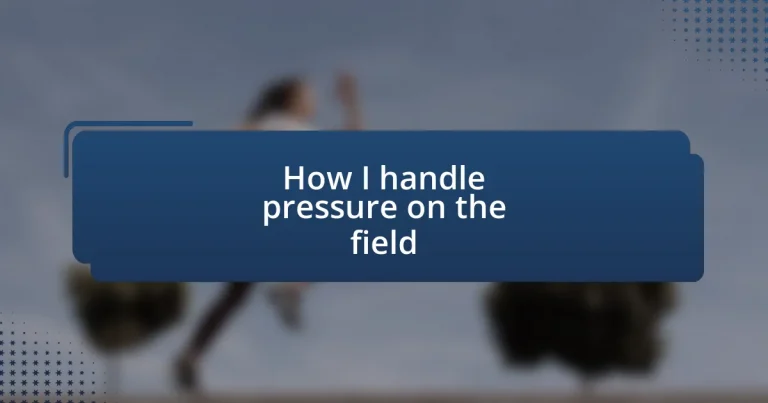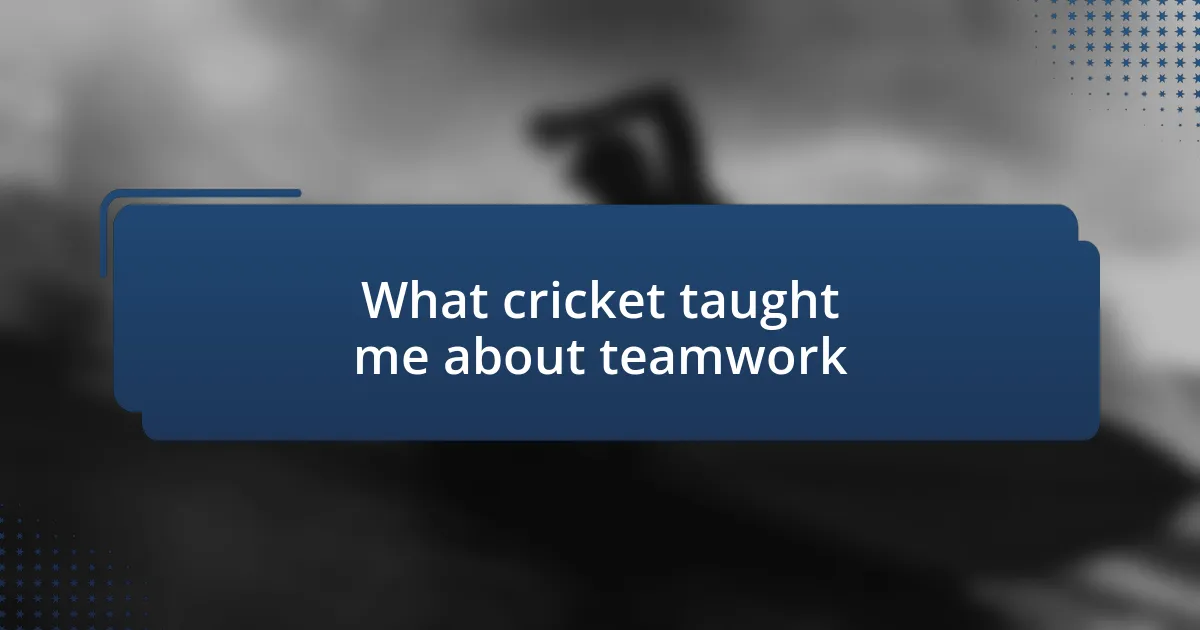Key takeaways:
- Pressure in sports requires athletes to understand both the game and themselves to maintain focus and self-belief.
- Identifying personal triggers, such as situational awareness and emotional indicators, is crucial for managing pressure effectively.
- Using mental resilience techniques like deep breathing and visualization significantly reduces anxiety and enhances performance in high-pressure situations.
- Creating a supportive team environment through open communication and celebrating small victories fosters resilience and morale during competitions.
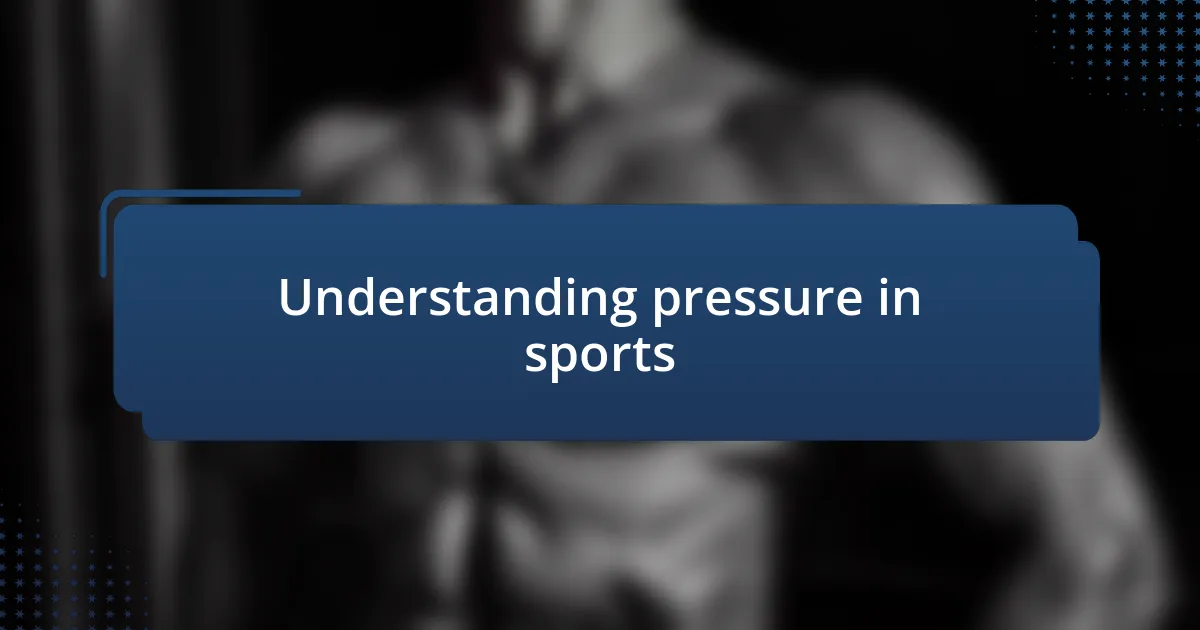
Understanding pressure in sports
Understanding pressure in sports is a complex experience that every athlete encounters. I remember standing at the free-throw line during a crucial game, my heart racing as the crowd roared. In that moment, I questioned everything: Could I handle the pressure? Would I let my team down?
Pressure in sports can feel overwhelming because it often comes with high stakes. I’ve often found myself in situations where a single mistake could steer the game in a completely different direction. That weight can be exhilarating and terrifying all at once, nudging you to push your limits while simultaneously sowing seeds of doubt.
Navigating this pressure requires a deep understanding of not just the game, but of oneself. I’ve learned that staying focused during intense moments is vital. Instead of allowing the noise of the crowd to envelop me, I channel that energy into my performance. Have you ever experienced a moment in competition where you just had to trust yourself? I have, and it’s in those moments that preparation and self-belief intertwine to create something incredible.
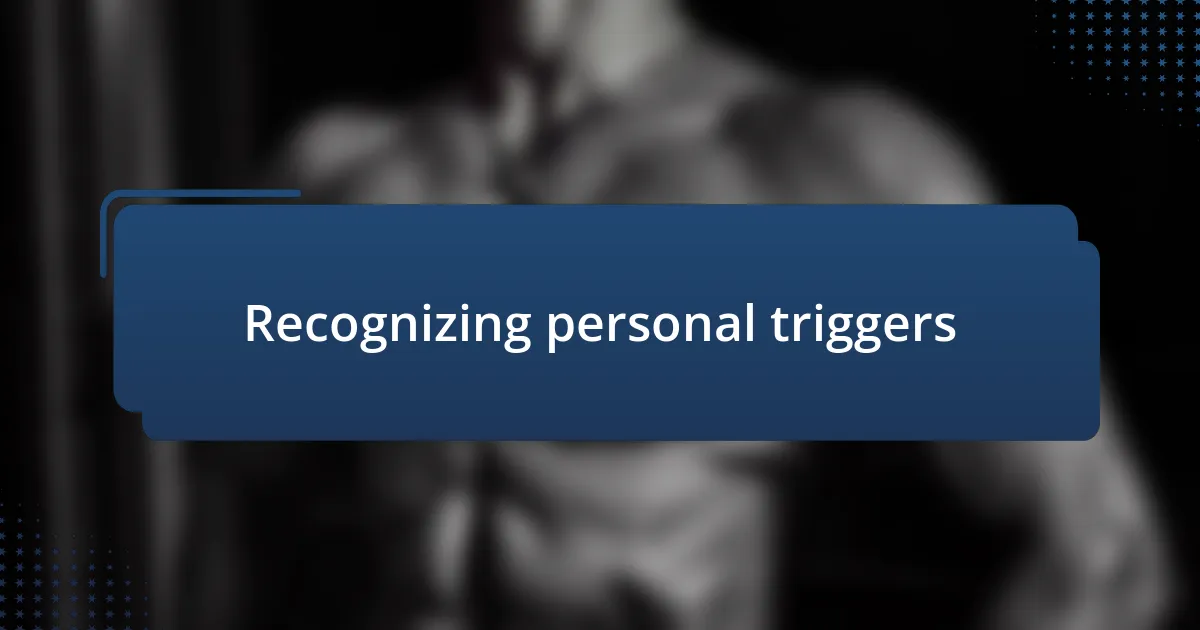
Recognizing personal triggers
Recognizing personal triggers is a crucial step in managing pressure effectively. Throughout my athletic journey, I’ve encountered specific situations that consistently raise my stress levels. For instance, I have noticed that when the game becomes intensely competitive, I tend to rush my decisions, leading to mistakes. Understanding these patterns has helped me mitigate their effects.
To identify your personal triggers, consider the following:
- Situational Awareness: Reflect on specific events or moments that spike your anxiety during games.
- Physical Responses: Pay attention to how your body reacts—rapid heartbeat, shallow breathing, or muscle tension can signal growing pressure.
- Emotional Indicators: Acknowledge your feelings, whether it’s frustration, fear, or excitement, as these emotions can be significant indicators of underlying pressure.
- Performance Feedback: Look back at your past performances and assess moments when you felt overwhelmed—what were the commonalities?
- Mindset Shifts: Recognizing when your internal dialogue turns negative can help you catch yourself before the pressure mounts.
By focusing on these aspects, I can steer my mindset towards a more controlled and confident approach.
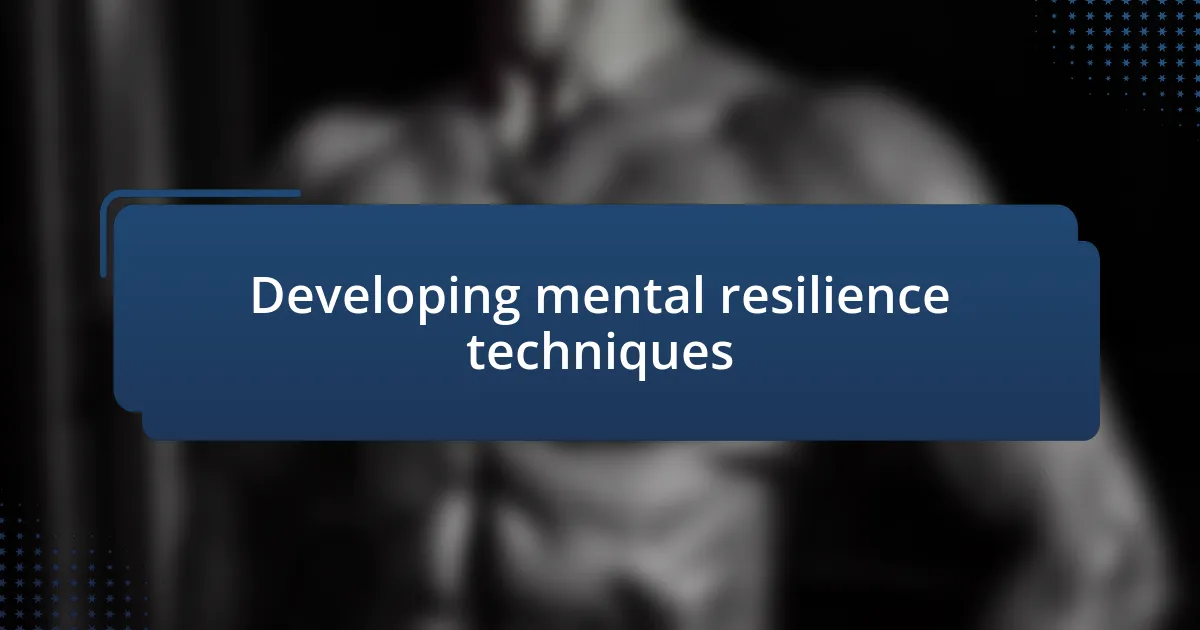
Developing mental resilience techniques
Developing mental resilience techniques has been one of the most transformative parts of my game. Whenever I face high-pressure situations, I’ve learned to employ deep breathing exercises. It’s interesting how something as simple as focusing on my breath can help reduce anxiety and clear my mind. I remember a time during a critical match when I felt the weight of expectation bearing down on me. Taking a few deep breaths enabled me to regain my focus and approach the game with clarity.
In addition to breathing techniques, visualization has become a powerful tool for me. Imagining myself succeeding in high-stakes moments allows me to create a mental roadmap of my ideal performance. During a tournament last year, instead of succumbing to nerves before my match, I visualized every move in detail. This practice transformed how I approached the game—reducing anxiety and boosting my confidence significantly.
Building a support network is another vital technique I rely on. Surrounding myself with teammates who understand the pressures of competition helps foster resilience. I recall moments when I felt overwhelmed, only to find solace in sharing my thoughts with a couple of close teammates. Their encouragement and shared experiences reminded me that I was not alone in navigating these challenges.
| Technique | Description |
|---|---|
| Deep Breathing | Focusing on breath to reduce anxiety and regain focus. |
| Visualization | Imagining ideal performance to create a mental map for success. |
| Support Network | Connecting with teammates to share experiences and build resilience. |
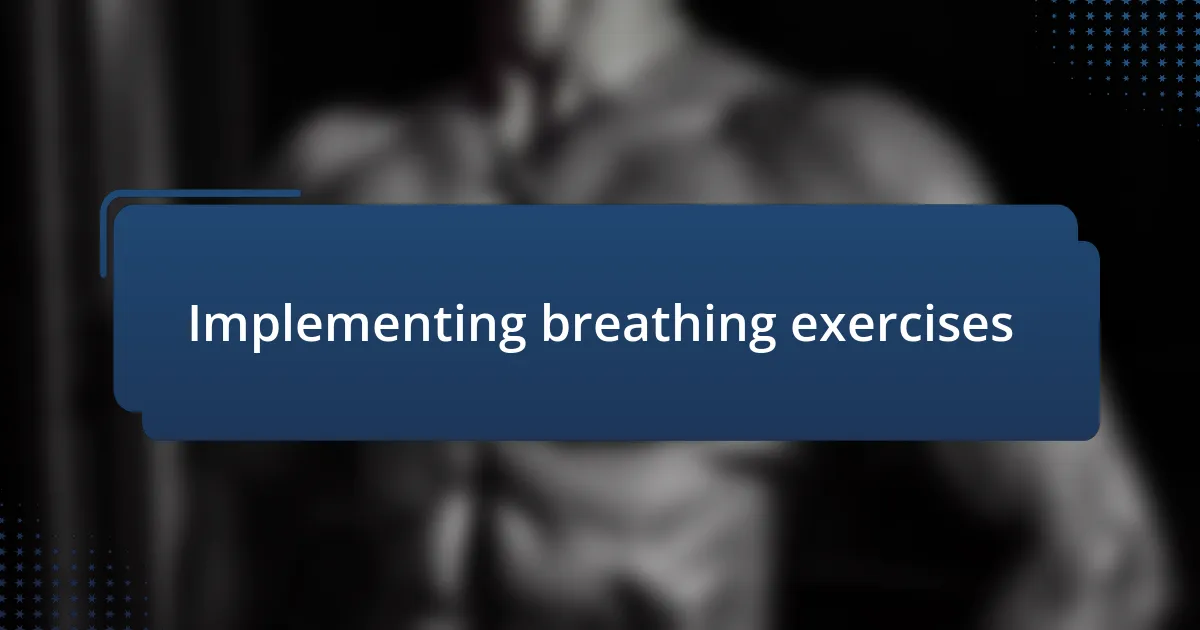
Implementing breathing exercises
Implementing breathing exercises has become a cornerstone of my approach to handling stress during competitions. I vividly recall a moment when the crowd was roaring, and I felt completely overwhelmed. In that pivotal instant, I closed my eyes and focused solely on my breath, inhaling slowly through my nose and exhaling gently through my mouth. Those few moments of intentional breathing allowed the chaos around me to fade, giving me back control over my thoughts and actions.
I often introduce breathing techniques into my routine before high-stakes matches. One technique I particularly enjoy is the 4-7-8 method, where I breathe in for four seconds, hold my breath for seven seconds, and exhale slowly for eight seconds. This practice not only calms my nerves but also grounds me physically and emotionally. Have you ever tried something similar? It may sound simple, but the impact it has on my performance is profound, allowing me to face pressure head-on with a composed mindset.
As I reflect on those intense moments on the field, it’s clear how vital controlled breathing is in maintaining my focus. I remember feeling my heart racing before a crucial penalty kick. Instead of succumbing to the pressure, I took a few deep breaths and visualized the ball going into the net. The clarity I found through breathing helped me transform anxiety into confidence, making a world of difference in my performance.
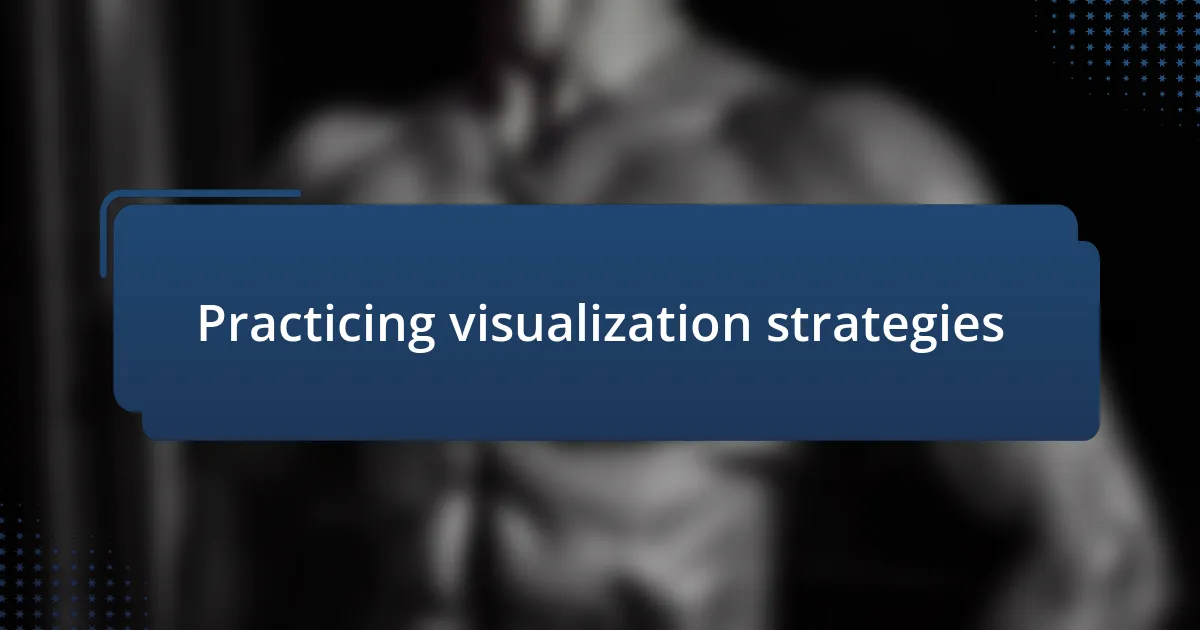
Practicing visualization strategies
Practicing visualization strategies has been a game changer for me. I remember a crucial moment before a big game, where I took a few moments to picture myself succeeding on the field. I envisioned every detail, from the sound of the crowd to the feeling of the ball at my feet, creating a mental movie that calmed my nerves and boosted my confidence.
Every time I face pressure, I tap into the power of visualization. For instance, before a tournament, I often find a quiet space and imagine myself executing perfect plays. I picture not just the successful outcomes, but the steps leading up to them. This practice ignites a sense of familiarity, almost as if I’ve already faced and conquered the challenges ahead. Have you ever visualized a scenario to prepare yourself? It’s like giving your mind a rehearsal for the big performance.
The emotions that accompany this practice can be transformative. During a particularly tense match, I locked onto a visualization of celebration—seeing my teammates and me high-fiving after a victory. This mental imagery shifted my focus from fear to excitement, enabling me to channel my energy positively. By integrating visualization into my routine, I’ve discovered it allows me to remain grounded, no matter how chaotic the situation becomes.

Creating a supportive environment
Creating a supportive environment is crucial in high-pressure situations. I’ve discovered that surrounding myself with positive teammates significantly eases the tension. One specific instance that stands out for me happened during a tight game when one of my teammates offered a reassuring pat on the back. It seemed like such a small gesture, but it really reinforced that we were all in this together, which surprisingly lightened the load on my shoulders.
Another aspect to consider is open communication. I find that when we can voice our concerns or fears, it fosters trust and connection. During one season, our coach encouraged regular check-ins, and I noticed how this simple act created a safe space to share experiences. It made me more empowered to ask for help when I needed it most. Have you tried discussing your feelings with your team? I’ve found that those honest conversations not only strengthen bonds but also create shared strategies for tackling pressure collectively.
Lastly, celebrating small victories can create a more uplifting atmosphere. I remember a time when we acknowledged every completed play, no matter how minor, during a particularly stressful match. This not only energized the team but also reminded us of our capabilities amidst the pressure. When was the last time you celebrated a small win? I believe these moments of recognition can transform the way we approach challenges, turning anxiety into motivation.
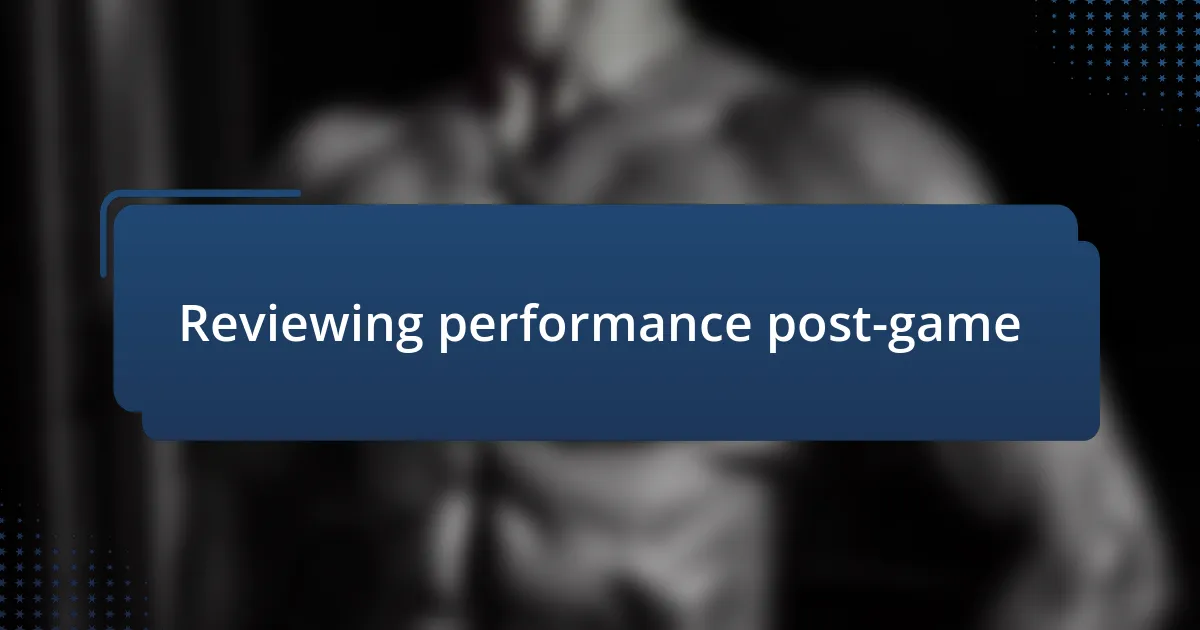
Reviewing performance post-game
Reviewing performance after a game is a vital part of my growth as an athlete. I often take time to sit down and reflect, not just on the stats or outcomes, but on my emotional journey throughout the game. There was a particular match when I felt overwhelming anxiety at the start, but looking back, I realized that acknowledging my nerves helped me stabilize my performance.
I find it helpful to dissect both my successes and mistakes. During one intense game, I executed some great plays, but I also missed critical opportunities. When I replayed those moments in my mind, I felt a mix of frustration and determination. Have you ever felt torn between pride and disappointment? For me, this combination fuels my desire to improve. By analyzing these mixed emotions, I gain clearer insights and set more precise goals for the future.
Additionally, sharing my reflections with teammates offers fresh perspectives. After a challenging match, I once gathered my closest allies to discuss our experiences together. Listening to their analyses not only validated my feelings but also opened my eyes to aspects I hadn’t considered. How often do you lean on your teammates in these discussions? I believe that this collaborative review not only strengthens our squad but also enriches my personal understanding of performance under pressure.
